#diamond realm dlc
Explore tagged Tumblr posts
Text
What makes Demifiend easy to transport to other games is because it's agreed on that he accepts his fate as a newborn demon which means 1. He has no attachment to his old world 2. His wishes left would be exploring new worlds and finding strong people to fight with.
The SMT1 protag, Aleph & Flynn on the other hand are more biased towards selflessness in their games and at very least you could say they're the types to stay behind to protect what's important to them. Which is why I found what the Messiahs in the Diamond Realm DLC did particularly interesting: the previous heroes are killed and "kidnapped" to be brought over to Nanashi, and instead of in-fighting, they join forces with the boy. There's consideration to the themes not only behind the roles of the protagonists in their own games but to the duality inside Nanashi of seeing others as either allies or tools aside the aspect of gathering help regardless of alignment or background differences for the sake of a common objective present in SMTIVA.
So while fans wishing to see Flynn & Nanashi as DLC in SMTV just like Demifiend is expected and of course it comes from desire for a simple callback, I personally don't find exciting the idea of just another silent interaction solely for the sake of an one-on-one battle lol. Although I think SMTV (inefficiently) copying Nocturne's minimalistic narrative plays a large part in it in my opinion.
...that is, I'm speaking mostly from the perspective of a Neutral/Bonds interpretation considering the SMTIV themes and how Flynn was written in SMTIVA. On the other hand, at the same time that I'm of the opinion that Nanashi still wouldn't be as detached as Demifiend is regardless of route, he not only could work well as some guy randomly appearing to test strenghts, he also has a certain mythological figure that could make a physical appearance and speak on his behalf like Demifiend does with Pixie. So I'd be more into this idea if it was specifically a Nanashi-Flynn duo and even better, if it was Dagda doing the push for both to fight.
10 notes
·
View notes
Note
Do newer games reference the “diamond realm multiverse” stuff or has that excuse plot been abandoned?
Not that I'm aware of? As far as I can tell it was only invoked for that 4A DLC where Stephen stands up and starts doing the destructo disk at you. It wasn't mentioned in, say, the SMTV Fiend DLC, so unless it's referenced in Dx2 then I imagine it was a one-and-done sort of deal.
11 notes
·
View notes
Text
Advancements in Tablet Compression Tooling: Revolutionizing Pharmaceutical Manufacturing
In the realm of pharmaceutical manufacturing, precision and efficiency are paramount. Among the many tools instrumental in this process, tablet compression tooling stands out as a linchpin in ensuring the production of high-quality tablets. Recent advancements in this field have not only enhanced the quality and consistency of tablet production but have also streamlined manufacturing processes, significantly impacting the pharmaceutical industry. Let's delve into the latest innovations and their implications.
The Evolution of Tablet Compression Tooling:
Traditionally, tablet compression tooling consisted of sets of dies and punches designed to compress powders into tablets of specific shapes and sizes. While this method proved effective, it was limited in terms of flexibility, precision, and speed. However, recent technological advancements have led to the development of sophisticated tablet compression tooling systems that offer unparalleled control and efficiency.
Key Technological Advancements:
Advanced Materials: Modern tablet compression tooling utilizes high-quality materials such as hardened tool steel or carbide, ensuring durability and resistance to wear and corrosion. These materials are essential for maintaining the integrity of the tablet's shape and surface finish over prolonged use.
Precision Engineering: Cutting-edge manufacturing techniques, including computer numerical control (CNC) machining and laser technology, enable the creation of intricate tooling designs with micron-level precision. This precision is crucial for producing tablets with uniform weight, thickness, and hardness, meeting stringent regulatory requirements.
Innovative Coatings: Specialized coatings, such as diamond-like carbon (DLC) and ceramic, are applied to tablet compression tooling surfaces to minimize friction, prevent sticking, and prolong tool life. These coatings not only enhance tablet quality but also reduce maintenance downtime and costs.
Automation and Robotics: Integration of automation and robotics into tablet compression systems has revolutionized manufacturing processes, allowing for continuous operation, real-time monitoring, and adaptive adjustments. Automated tool inspection and cleaning further ensure product consistency and compliance with quality standards.
Data Analytics and Connectivity: Incorporation of sensors and data analytics software enables comprehensive monitoring of tablet compression parameters, including compression force, ejection force, and tablet thickness. Real-time data analysis facilitates predictive maintenance, process optimization, and quality control, driving operational efficiency and product quality.

Implications for Pharmaceutical Manufacturing:
Enhanced Product Quality: The advanced features of modern tablet compression tooling contribute to the production of tablets with superior quality attributes, including uniformity, hardness, and dissolution profile. Consistent tablet quality minimizes variability in drug performance and ensures patient safety and efficacy.
Increased Production Efficiency: Automation and robotics streamline manufacturing processes, reducing cycle times and increasing production throughput. Furthermore, predictive maintenance algorithms prevent unexpected equipment failures, minimizing downtime and maximizing operational uptime.
Compliance and Regulatory Assurance: The precision and control offered by advanced tablet compression tooling facilitate compliance with stringent regulatory requirements, such as those outlined by the U.S. Food and Drug Administration (FDA) and the European Medicines Agency (EMA). Accurate documentation of process parameters and real-time monitoring capabilities ensure audit readiness and regulatory compliance.
Cost Reduction and Resource Optimization: Improved tool longevity, reduced maintenance requirements, and minimized scrap rates translate to cost savings for pharmaceutical manufacturers. Additionally, increased production efficiency allows for optimal utilization of resources, lowering overall manufacturing costs and enhancing competitiveness.

Future Directions and Challenges:
While recent advancements in tablet compression tooling have propelled pharmaceutical manufacturing to new heights, the industry continues to explore innovative solutions to address emerging challenges. Future developments may focus on:
Integration of artificial intelligence (AI) and machine learning algorithms for predictive process optimization and quality prediction.
Exploration of novel materials and coatings to further enhance tool performance and durability.
Advancement of additive manufacturing (3D printing) techniques for rapid prototyping and customization of tablet compression tooling.
However, challenges such as ensuring compatibility with diverse drug formulations, minimizing environmental impact, and addressing regulatory complexities remain areas of active research and development.
Conclusion:
In conclusion, tablet compression tooling has undergone a remarkable transformation, driven by technological innovation and a relentless pursuit of excellence in pharmaceutical manufacturing. The latest advancements offer unprecedented levels of precision, efficiency, and quality control, revolutionizing the production of tablets and ensuring the delivery of safe and effective medications to patients worldwide. As the industry continues to evolve, collaboration between manufacturers, technology providers, and regulatory agencies will be essential in shaping the future of tablet compression technology and its impact on healthcare.
0 notes
Text
Breaking the Mold: Why Hard Chrome Replacement Is the Future of Industrial Coatings
In the realm of industrial coatings, the quest for alternatives to hard chrome plating has been an ongoing pursuit. Traditionally, hard chrome has been a popular choice due to its excellent corrosion resistance, hardness, and wear resistance properties. However, its use comes with significant drawbacks, including environmental concerns related to toxic hexavalent chromium emissions during the plating process and the health risks associated with exposure. As industries increasingly prioritize sustainability and worker safety, the search for viable hard chrome alternatives has intensified. Enter the era of hard chrome replacement – a promising shift that is poised to revolutionize the industrial coating landscape.
The need for hard chrome alternatives has spurred innovation across various sectors, driving the development of advanced coating technologies that offer comparable or superior performance while mitigating environmental and health risks. One such alternative gaining traction is the use of thermal spray coatings, such as high-velocity oxygen fuel coating (HVOF) and plasma spraying. These processes deposit a wide range of materials, including ceramics, metals, and composites, onto substrates with exceptional bond strength and wear resistance. Not only do thermal spray coatings provide excellent corrosion protection and surface hardness, but they also eliminate the hazardous byproducts associated with traditional chrome plating, making them an environmentally friendly choice.
Another promising avenue for hard chrome replacement lies in the realm of electroless nickel coatings. Unlike traditional electroplating methods that rely on an electric current to deposit metal onto a substrate, electroless nickel plating occurs through an autocatalytic chemical reaction, resulting in uniform coatings with precise thickness control. Electroless nickel coatings offer excellent corrosion resistance, hardness, and lubricity, making them ideal for a wide range of industrial applications, from aerospace components to automotive parts. Moreover, the elimination of the electric current requirement reduces energy consumption and eliminates the need for toxic chromium baths, aligning with sustainable manufacturing practices.
Furthermore, advancements in composite coatings, such as diamond-like carbon (DLC) and polymer-based materials, offer a compelling alternative to hard chrome in specific applications. DLC coatings exhibit exceptional hardness, low friction, and superior wear resistance, making them suitable for cutting tools, molds, and automotive components. Meanwhile, polymer-based coatings provide flexibility, chemical resistance, and corrosion protection, catering to industries such as oil and gas, marine, and automotive.
The transition away from hard chrome plating towards sustainable alternatives is not only driven by environmental and health considerations but also by regulatory pressures and market demand for greener solutions. With stricter regulations governing the use of hazardous substances and increasing awareness of the ecological footprint of industrial processes, manufacturers are increasingly seeking alternatives that offer comparable performance without compromising on safety or environmental stewardship.
In conclusion, the future of industrial coatings lies in the adoption of hard chrome alternatives that prioritize sustainability, performance, and safety. Whether through thermal spray coatings, electroless nickel plating, or advanced composites, the era of hard chrome replacement heralds a new chapter in industrial coating technology. By embracing innovative solutions that break away from traditional paradigms, manufacturers can achieve superior performance while safeguarding the environment and the well-being of workers. As we navigate this transition, companies like Ewsllp play a pivotal role in driving innovation and facilitating the adoption of sustainable coating solutions, shaping a brighter and greener future for industries worldwide.
0 notes
Text
so demifiend is def voiced by matt mercer and aleph is voiced by bryce papenbrook in the diamond realm dlc but i can't figure out who voices the hero (it sounds familiar but urgh)
#balls#hearing these lines in isolation really makes it easy to identify good god#when aleph said thank you i felt my balls drop i knew immediately#a bit harder to discern demifiends since theres some effects on his voice but mercer has certain intonations that make him easy to figure o
1 note
·
View note
Text
Cutting Tool Coating: Unveiling the Power Behind Precision Machining
In the realm of machining and precision engineering, the quality of cutting tools is paramount. Cutting tool coating has emerged as a transformative technology, enhancing the performance and durability of these tools. This article delves into the world of cutting tool coating, exploring its significance, various types, and the profound impact it has on precision machining.
The Significance of Cutting Tool Coating
Cutting tools are the workhorses of precision machining, used in industries ranging from aerospace to automotive manufacturing. The demands placed on these tools are immense, with high-speed operations, challenging materials, and strict tolerances to meet. Cutting tool coatings play a crucial role in addressing these challenges and offer a multitude of benefits:
Enhanced Durability
Coated cutting tools exhibit significantly extended lifespans compared to their uncoated counterparts. The coating acts as a protective barrier, reducing friction and wear during machining processes. This translates to fewer tool replacements, reduced downtime, and substantial cost savings for manufacturers.
Improved Performance
Cutting tool coating enhance the tool's overall performance. They reduce friction and heat generation during machining, leading to smoother cutting, increased efficiency, and superior surface finishes on workpieces. Machinists can achieve higher material removal rates without compromising precision, ultimately boosting productivity.
Extended Tool Life
One of the most prominent advantages of cutting tool coatings is the extension of tool life. Coated tools can maintain sharp edges and dimensions for longer periods, delivering consistent and reliable results. This is particularly important for industries where precision and repeatability are paramount, such as aerospace and medical device manufacturing.
Enhanced Resistance to Wear
Coated cutting tools offer superior resistance to wear and abrasion. They can handle the extreme conditions often encountered in machining hard and abrasive materials like stainless steel, titanium, and composites. As a result, tool wear is reduced, leading to higher efficiency and fewer interruptions in the machining process.
Versatility and Material Compatibility
Cutting tool coatings are versatile and compatible with a wide range of tool materials, including carbide, high-speed steel, and ceramics. This adaptability allows manufacturers to choose the tool material best suited to their specific applications while still benefiting from the advantages of cutting tool coatings.
Types of Cutting Tool Coatings
Several types of cutting tool coatings are used in precision machining, each offering unique properties and benefits:
TiN (Titanium Nitride): TiN coatings provide excellent wear resistance and are often used for cutting tools in general-purpose applications. They have a characteristic gold color.
TiCN (Titanium Carbonitride): TiCN coatings combine the properties of TiN and TiC, offering enhanced wear resistance and improved performance in high-temperature environments.
TiAlN (Titanium Aluminum Nitride): TiAlN coatings are known for their high-temperature stability, making them ideal for machining heat-resistant materials like Inconel and titanium alloys.
AlTiN (Aluminum Titanium Nitride): AlTiN coatings provide exceptional hardness and heat resistance, making them suitable for high-speed machining and dry cutting applications.
Diamond-like Carbon (DLC): DLC coatings offer extremely low friction, reducing heat buildup during machining. They are often used for non-ferrous materials and composites.
The Coating Process
Cutting tool coating is applied using a process known as Physical Vapor Deposition (PVD). In this method, a vacuum chamber is used to deposit thin layers of the chosen coating material onto the tool's surface. This process ensures uniform coverage and adherence, critical for the coating's effectiveness.
Maintenance and Care
To maximize the benefits of coated cutting tools, regular maintenance is essential. Cleaning the tools after use to remove chips, debris, and coolant residue is important. Additionally, proper storage in a dry, temperature-controlled environment can help preserve the coating's effectiveness.
0 notes
Text
Cutting Tool Coating: Unveiling the Power Behind Precision Machining
In the realm of machining and precision engineering, the quality of cutting tools is paramount. Cutting tool coating has emerged as a transformative technology, enhancing the performance and durability of these tools. This article delves into the world of cutting tool coating, exploring its significance, various types, and the profound impact it has on precision machining.
The Significance of Cutting Tool Coating
Cutting tools are the workhorses of precision machining, used in industries ranging from aerospace to automotive manufacturing. The demands placed on these tools are immense, with high-speed operations, challenging materials, and strict tolerances to meet. Cutting tool coatings play a crucial role in addressing these challenges and offer a multitude of benefits:
Enhanced Durability
Coated cutting tools exhibit significantly extended lifespans compared to their uncoated counterparts. The coating acts as a protective barrier, reducing friction and wear during machining processes. This translates to fewer tool replacements, reduced downtime, and substantial cost savings for manufacturers.
Improved Performance
Cutting tool coating enhance the tool's overall performance. They reduce friction and heat generation during machining, leading to smoother cutting, increased efficiency, and superior surface finishes on workpieces. Machinists can achieve higher material removal rates without compromising precision, ultimately boosting productivity.
Extended Tool Life
One of the most prominent advantages of cutting tool coatings is the extension of tool life. Coated tools can maintain sharp edges and dimensions for longer periods, delivering consistent and reliable results. This is particularly important for industries where precision and repeatability are paramount, such as aerospace and medical device manufacturing.
Enhanced Resistance to Wear
Coated cutting tools offer superior resistance to wear and abrasion. They can handle the extreme conditions often encountered in machining hard and abrasive materials like stainless steel, titanium, and composites. As a result, tool wear is reduced, leading to higher efficiency and fewer interruptions in the machining process.
Versatility and Material Compatibility
Cutting tool coatings are versatile and compatible with a wide range of tool materials, including carbide, high-speed steel, and ceramics. This adaptability allows manufacturers to choose the tool material best suited to their specific applications while still benefiting from the advantages of cutting tool coatings.
Types of Cutting Tool Coatings
Several types of cutting tool coatings are used in precision machining, each offering unique properties and benefits:
TiN (Titanium Nitride): TiN coatings provide excellent wear resistance and are often used for cutting tools in general-purpose applications. They have a characteristic gold color.
TiCN (Titanium Carbonitride): TiCN coatings combine the properties of TiN and TiC, offering enhanced wear resistance and improved performance in high-temperature environments.
TiAlN (Titanium Aluminum Nitride): TiAlN coatings are known for their high-temperature stability, making them ideal for machining heat-resistant materials like Inconel and titanium alloys.
AlTiN (Aluminum Titanium Nitride): AlTiN coatings provide exceptional hardness and heat resistance, making them suitable for high-speed machining and dry cutting applications.
Diamond-like Carbon (DLC): DLC coatings offer extremely low friction, reducing heat buildup during machining. They are often used for non-ferrous materials and composites.
The Coating Process
Cutting tool coating is applied using a process known as Physical Vapor Deposition (PVD). In this method, a vacuum chamber is used to deposit thin layers of the chosen coating material onto the tool's surface. This process ensures uniform coverage and adherence, critical for the coating's effectiveness.
Maintenance and Care
To maximize the benefits of coated cutting tools, regular maintenance is essential. Cleaning the tools after use to remove chips, debris, and coolant residue is important. Additionally, proper storage in a dry, temperature-controlled environment can help preserve the coating's effectiveness.
0 notes
Text
Hero (smt 1 protagonist): Um...???
Abel (desu 1 protagonist): So, you're the reincarnation of Adam?
Hero: Th-that's what I've been told, yes.
Abel *softly, but with great emotion*: ...Dad?
Hero: ...I...What?!?!
#smt#shin megami tensei#diamond realm dlc#devil survivor#devil survivor overclocked#diamond realm multiverse travel au#desu#kazuya minegishi#smt hero#desu able#smt adam#abel meets his reincarnated papa#hero is so young but is now a father#wait till he meets naoya#cain is not gonna be happy about this#if you have played desu you will understand#multiverse travel
101 notes
·
View notes
Note
smt1 anon once again, i want to keep the interest and spirit alive so im going to finally send a question about the game lol. im curious if you have any headcanons for the main cast or any side characters?
i like to think kazuya has the most meaningful bond with stephen? i know stephen is mostly an Entity but in smt1 i feel like he’s the closest you get to him being just a dude (which is why i find kazuya meeting him inherently funny.. like whoa!! thats just straight up stephen fuckig hawking bro!!!) like he probably really just is a dude in that game. except for the fact he’s unchanged by the 30 year timeskip 🤔
anyway, i suppose i mean that in the way that first game was probably as much a learning experience for stephen as it was for kazuya, in the sense of him scouting out saviors, as this is the first time he’s doing so. in 1 he just sends the program to everyone, hoping someone will bite, and luckily kazuya does. in 2 he gives the program to people he thinks look tough, like aleph... kind of a silly line on his part on the surface, but perhaps it is indicative of some intuition he went off of after having learned from assisting and bearing witness to kazuya’s journey?? he’s well into being an Enlightened Entity at that point, but i like to think kazuya helped him achieve some of that wisdom as much as he helped kazuya
#not to mention it's kazuya's soul he has specifically saved in his possesion in the 4a diamond realm dlc :']#(whcih i didnt play i just watched on yt cuz good Grief)#anyhow. go grandpa!!!!!!#katchat#anonymous#smt1
27 notes
·
View notes
Note
I swear IVA had devastating effects on how the greater series is perceived. The ammount of people that somehow don't get that the YHVH plot and Diamond Realm DLC were just pointless nostalgia-wanking is staggering.
I liked @shinmegamitensei2's comment from yesterday on one of the previous posts:

It gave me a random thought. Beyond the individual 4A content, this grasping for "canon" and timelines we see in the Megaten fandom might be the only ways some fans may be able to connect to and understand the series. Like, perhaps they can't relate to or comprehend the mythological content in the series, but connecting dots around the characters and more familiar Christian figures they absolutely can. Ditto with connected timelines and universes, which is standard pop culture wiki discourse; knowing what the Diamond Realm is, is not.
24 notes
·
View notes
Photo

Pokemon Games Story Tier Ranking
S Tier - Genuinely well-crafted narratives with superb character development and themes.
Apparently the series reaches this peak every other generation. It first happened in Gen V with Black/White, which combined the previous distinct “win badges and enter the Pokemon League to become the Champion” and “Stop the local villainous team from wreaking havoc” plotlines into one epic story about the player character discovering themselves to be a hero of legend destined to fight an opposing hero over the fate of the world. Gen VII brought us Sun/Moon and Ultra Sun/Ultra Moon, two different tellings of the same story that on their own hold some major weaknesses but when combined make for the tale of the most fleshed out region and cast of characters in the game series to date. And now in Gen IX we have Scarlet/Violet, an open world game that allows you to shape the narrative in the way you see fit but with that narrative always being a poignant, fascinating and emotional experience.
A Tier - The narratives can be shaky, but still give you plenty to engage with and think about.
After Diamond/Pearl suffered from too many cooks in the kitchen turning out an undercooked narrative, Platinum fine-tunes everything and produces a compelling story about a cult using the reality of the Sinnoh region’s myths to attempt to destroy and recreate the entire universe, only for the universe to bite back hard. Black 2/White 2′s story was a noticeable step down from its predecessor, but still continued its themes and character development while further expanding the Unova region. Pokemon Masters’ writing is sharp and makes great usage of the franchise’s history. And Legends: Arceus tells a story in a formulaic and repetitive way, but said story is a fun, fascinating and even highly emotional at times one so it all balances out.
B Tier - Nothing groundbreaking, but with something extra from the usual Pokemon fare.
Colosseum and XD: Gale of Darkness have notably darker, edgier and harder stories than is usual for this franchise as does Mystery Dungeon: Explorers of Time/Darkness/Sky, the three Rangers games show a much different side of the Pokemon world than the usual competitive battling-oriented locales, Conquest is a unique crossover with the Nobunaga’s Ambition tactical series and gave us the series in feudal Japan style long before Legends: Arceus, and Detective Pikachu is an episodic mystery game with a concept and story that was even deemed strong enough to provide the basis for a major Hollywood blockbuster.
C Tier - The usual Pokemon fare. Not the best in the realm of video games, but not the worst.
Gold/Silver/Crystal, Ruby/Sapphire/Emerald, Diamond/Pearl, and all of their remakes qualify here, as do the other Mystery Dungeon games (particularly the originals and their remake; the other two are just pale imitators of the Explorers story). You get a significant degree of plot, character development and themes in all of them, but overall it’s not the main focus.
D Tier - Huh? Plot? Character development? Surely you jest; we’re only here to have fun!
It’s not surprise that the original Red/Blue/Yellow and their remakes: their story is the very definition of Excuse Plot and not shy about being so. Puzzle League, based directly off the anime series, is also given an Excuse Plot, as are the Snap games, particularly the first one. Sword/Shield are a bizarre outlier here: there is technically some plot and some character development going on in this story, but the game does everything in its power to block you off from it at almost every turn, with your gameplay experience being prioritized by force. The only reason it’s not at E Tier is because the postgame and DLC expansions gave it some greater narrative heft, which is certainly more than you can say about the actual E Tier game.
E Tier - This is a bad story and you should feel bad for putting it out in this sorry state.
X/Y’s story is an absolute mess. It doesn’t know whether it wants to be a standard C Tier narrative, a D Tier narrative as a deliberate way to harken back to Gen I, or do something epic and say something significant like an A or S tier narrative. As such, the story is so messily and underwhelmingly presented to us that it doesn’t reach any of those standards. The lack of a Z version to potentially iron everything out the way that Platinum did for Diamond/Pearl hurts it even further. This was the lowest point in the series, narrative-wise.
16 notes
·
View notes
Text
FALLING THROUGH SPACE & TIME. (P:LA VERSE)

VERSE TAGS: PLA VERSE., pla spoilers (where applicable)
SUMMARY: In a different AU timeline, Barry cannot simply watch from the sidelines as the protagonist enters the Distortion World with Cynthia. Desperate to help, he breaks away from his other childhood friend and Professor Rowan, boldly leaping into the mysterious portal himself. Hasty as ever, he even leaves behind his belt of Pokemon capsules atop the mountain. Barry never gets the time to go back and get them-- his feet never touch the supposed solid ground on the other side, and the blond is sent hurtling through this mysterious realm, a rare convergence of time, space, and shadow.
THUD! When Barry wakes up next, he has no idea where he is or where he came from. Afflicted with near total memory loss (aside from his name, Pokemon training experience, and swagger), the Sinnohan is rescued by a passing Gingko Guild member, who takes him back to Jubilife Village.
Despite everything, it doesn’t take long for the “new” Barry to adjust to his new life in Hisui. Now a young member of the Gingko Guild, he cheerfully peddles wares all across the region, even venturing into its more dangerous areas. Ever the energetic people pleaser, he doesn’t care what your alignment is--Diamond Clan, Pearl Clan, whatever.
No, he only cares about what you’ll be buying. The Guild has some great deals, you know!
[Potential spoilers below!]
KEY HEADCANONS
When he “lands” in Hisui, Barry’s memory loss is even more severe than Ingo’s. He forgets nearly everything about his previous life, even his friends, former Pokemon, and family.
Even so, Barry occasionally remembers scattered fragments of a past life. Akari and Rei seem so familiar, and he refuses to take off his classic green scarf for some unknown reason. Whatever...this is his home now, right? The only home he’s ever known...right?
Barry idolizes every member of the Gingko Guild. They’re his unofficial Hisuian family, hidden motivations be damned. Barry loves his work and can often be found venturing where the other Gingko Guild members are hesitant to go.
Shortly after meeting him, Ginter gave Barry the nickname “Oran” (after Barry’s favorite Hisuian snack), and it’s stuck around the village and within the guild. Barry has great knowledge of the region’s Berries, and (shockingly) he’s quite skilled at cooking them.
Barry has retained his skills as a trainer even after falling from the mysterious portal. He pestered Professor Laventon until the good doctor offered him a Cyndaquil to raise on his own. Barry’s team now consists of: Typhlosion, Floatzel, Heracross, and Staraptor. This lineup just feels right, and he can’t tell you why.
(ooc: Barry’s entire verse might shift pending any upcoming DLC. Please let there be official DLC for my boy.)
#pla spoilers#PLA VERSE.#(the new game didnt do anything lorewise for my boy so ive decided to pull a thanos and do it myself...)#(barrys here to light up hisui so why does his origin story make me so sad...cmon)#(BRING HIM HOME)
25 notes
·
View notes
Note
In reference to the Diamond Realm ask, it is only mentioned once I believe in the the event with Vairocana, Hecate, and Atavaka. I believe as the place Vairocana came from.
(In reference to this ask.)
Yeah, that sounds about right; just something to align with its depiction circa SMT2, which is always more fertile ground for reference than DLC from the now defunct 3DS eshop. Stephen will never again stand up and destroy the moon with a powerful ki blast to prevent Aleph from assuming his 'oozaru' (great ape) form.
5 notes
·
View notes
Photo

diamond realm dlc
#smtiva#i imagine demifiend beating stephen extra hard because he's the only one that doesn't know who he is
4 notes
·
View notes
Text
some SMTII and SMTIV notes
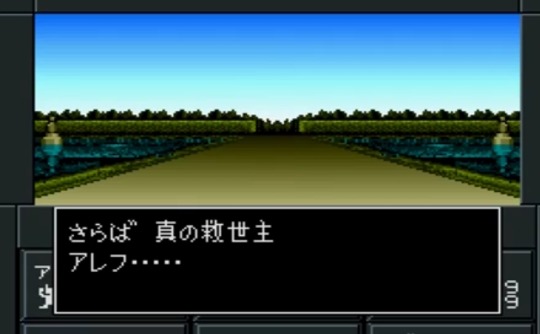
救世主 Kyuuseishu

Aleph is called the true ‚Kyuuseishu‘ (Saviour of the World). That expression is used when Jesus is portrayed in the Salvator Mundi position. Kyuuseishu is also used for all the protagonists in the Diamond Realm DLC in SMTIV Final.
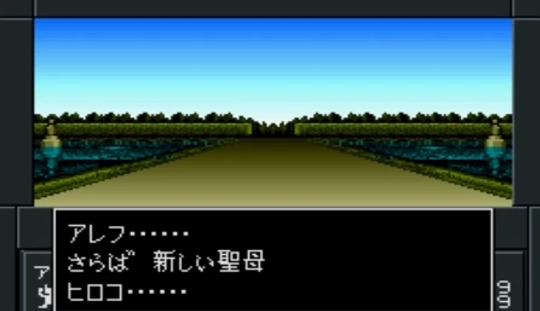
聖母 Seibo Hiroko is called ‚Seibo‘ (holy mother). This expression is always used in Japanese in connection to Virgin Mary.
More on the name Aleph:
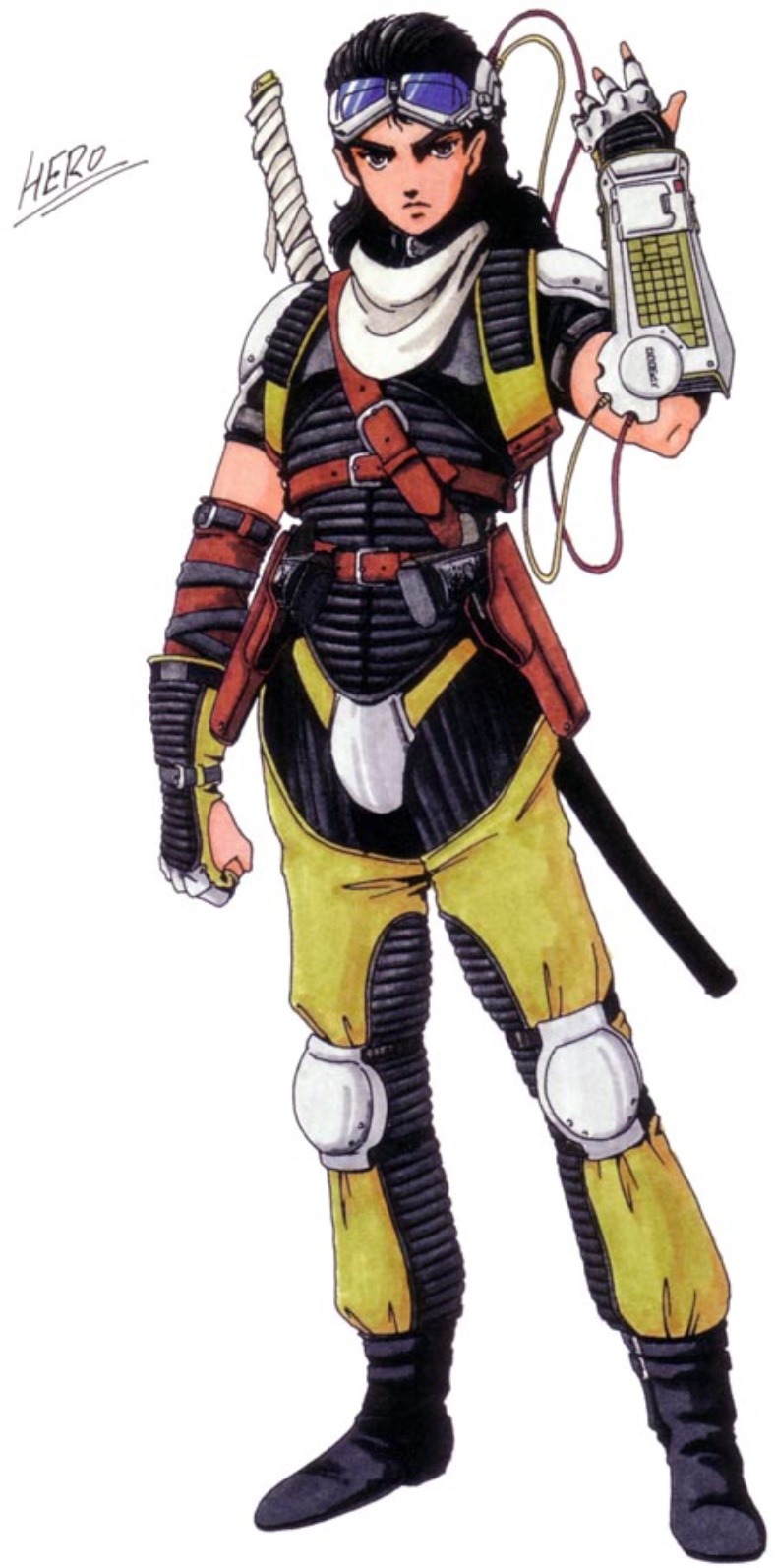
The name Aleph next to being from the Hebrew alphabet also has Christian allusions as well. Namely alluding to the expression Alpha and Omega/Aleph and Tav.

Alpha and Omega are the first and the last letters of the Greek alphabet. The first and the last letters of the Hebrew alphabet are, respectively, א (aleph) and ת (tav). The letter Aleph means “an ox” and symbolizes a sacrificial animal offered to God. The letter Tav means “a mark“. I am the Aleph and the Tav, the beginning and the end, the first and the last (Rev. 22:13).

Also the letter Aleph appears as IC in its cursive form looking similar to Jesus Christ. It‘s kinda cool since Aleph is so heavily modeled after Jesus that even his name might not just be randomly chosen.

There is also a different variant of the letter Tav ת. It looks like a cross.
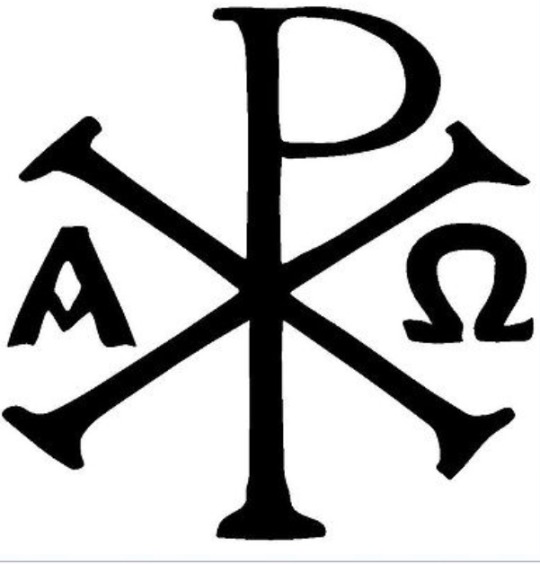
Alpha and Omega is also often used in the Chi-Rho. Eli Eli lama sabachthani

(my god why have you forsaken me). Quoted by Jesus on the cross. It derives from psalm 22 supposedly written by King David. This psalm is often interpreted by Christians to have Messianic symbolism since some lines seem similar to Jesus‘ crucifixion (for example ’They part my garments among them, and cast lots upon my vesture.‘ which resembles the Romans gambling for Jesus‘ clothes etc.) I have read that since Jesus quoted this psalm that means that Jesus basically claimed that psalm as his. Some spectators of the crucifixion mistakingly or mockingly thought that he is calling Elijah (who is responsible for saving innocents). Interestingly while the psalm starts dramatically it ends positively similar to the contrast between Jesus‘ crucifixion and later resurrection. Also small discourse on the relation between Jesus and David: Matthew 9 Jesus Heals Two Blind Men 27 And as Jesus passed on from there, two blind men followed him, crying aloud, “Have mercy on us, Son of David.” 28 When he entered the house, the blind men came to him, and Jesus said to them, “Do you believe that I am able to do this?” They said to him, “Yes, Lord.” 29 Then he touched their eyes, saying, “According to your faith be it done to you.” 30 And their eyes were opened. And Jesus sternly warned them, “See that no one knows about it.” 31 But they went away and spread his fame through all that district. Jesus is often by side characters called Son of David as well. For example two blind men he heals call him that.


Another scene in which he famously is called Son of David (along with Messiah) is on Palm Sunday when he enters Jerusalem on a donkey. The Messiah is said to be from the House of David. Jesus‘ mother Mary is related to Prince Nathan a younger son of David and Bathsheba. Nathan never ruled though which is why Jesus‘ foster earthly father Joseph of Nazareth is important. Joseph is actually related to King Solomon the oldest surviving son of David and Bathsheba, who was actually king. Joseph basically adopted Jesus into the main Davidic branch. Why the adoption? Due to the curse of Jeconiah who is an ancestor of Joseph of Nazareth. Jeconiah was cursed by God meaning that a direct descendant of Solomon couldn‘t technically become the Messiah anymore. Henceforth why this is broken with Jesus being from the side Nathan branch + his virgin birth. I personally always thought that his Davidic lineage was what actually killed Jesus. The Sanhedrin gave him to the Romans. The Romans did not care about Son of God, Messiah etc. What they cared about was that there were people around saying he the Son of the House David should be king which leads to the crown of thorns mockery and INRI inscription on his cross.
If you read up on the House David it‘s also a really hot mess. David who uses his position to sleep with Uriah‘s wife Bathsheba and sends Uriah to his death to solve this problem, Amnon who rapes his half-sister Tamar, Absalom who turns against David and rapes ten concubines of David etc.
The relation of Jesus to Bathsheba is actually emphasized along with Jesus relation to Rahab ‚the whore of Jericho‘, Tamar ‚who disguised as a prostitute to sleep with her father in law’, and Ruth ‚the Moabite thus seen as Gentile by Jews‘ to precisely not only emphasize women like Sarah (Abraham‘s wife), Rebecca (Isaac‘s wife) and Leah (Jacob‘s wife) who are seen as paragons (they all appear in Jesus genealogy anyway) and to hide stuff.

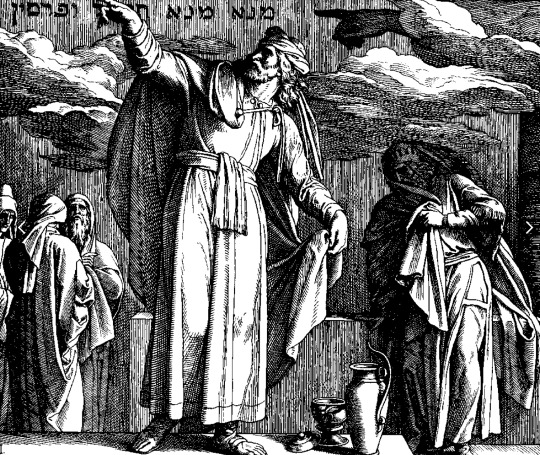
מנא, מנא, תקל, ופרסין
Mene, Mene, Tekel, Upharsin
“numbered, weighed, divided/Persia.”
“The writing on the wall”, or “the handwriting on the wall” or “Mene Mene”, is an idiom for doom and a set future.
It’s a story from the Book of Daniel (Old Testament) Chapter 5. At a banquet hosted by King Belshazzar a disembodied hand appeared and wrote on the palace wall, “Mene, Mene, Tekel, Upharsin”.
Daniel was supposed to interprete this and it was seen as the end for the Babylonian kingdom. That same night King Belshazzar was killed and Babylon fell to the Persians and Medes.
Son of Man

Daniel 7
13 “I saw in the night visions,
and behold, with the clouds of heaven
there came one like a son of man,
and he came to the Ancient of Days
and was presented before him.
14
And to him was given dominion
and glory and a kingdom,
that all peoples, nations, and languages
should serve him;
his dominion is an everlasting dominion,
which shall not pass away,
and his kingdom one
that shall not be destroyed.
The expression Son of Man is famously used in the book Daniel in a vision given to Daniel in which four "beasts," representing nations are judged by God. The "Ancient of Days" (God) gives dominion over the earth to "the Son of Man”.

Ancient of Days also appears in SMTIV.
Daniel as I explained in another article was chief of the Magi in Babylon (interesting to think about considering the Magi who visited Jesus) and the archangel Gabriel also appeared to him explaining the 70 weeks prophecy (which Christians believe foretold the exact timeframe in which the Messiah would appear since it fits the timeframe of Jesus)
This expression Son of Man was later used during the Second Temple era as a name for the Messiah since people understood what Jesus was referring to when he used it.
Jesus when using this term applied Daniel‘s prophecy to himself. He quoted Daniel often even supporting Daniel‘s claim that the second temple would be destroyed. It also seems like most Christians listened to Jesus’ advice regarding the temple to flee to the mountains which is why Christians abandoned Jerusalem and hid in Pella when the Temple fell.
Matthew 26:57-67
The high priest said to him, “I charge you under oath by the living God: Tell us if you are the Messiah, the Son of God.”
64 “You have said so,” Jesus replied. “But I say to all of you: From now on you will see the Son of Man sitting at the right hand of the Mighty One and coming on the clouds of heaven.”

The most dramatic sequence in which Jesus uses this term is actually this scene.
The Sanhedrin has caught him and Caiaphas asks him to tell them whether he is the Messiah and Son of God. Jesus says that they are correct and once again makes a reference to Daniel. This makes Caiaphas so angry that he tears his clothes.
Acts 7:54-56
54 When the members of the Sanhedrin heard this, they were furious and gnashed their teeth at him. 55 But Stephen, full of the Holy Spirit, looked up to heaven and saw the glory of God, and Jesus standing at the right hand of God. 56 “Look,” he said, “I see heaven open and the Son of Man standing at the right hand of God.“
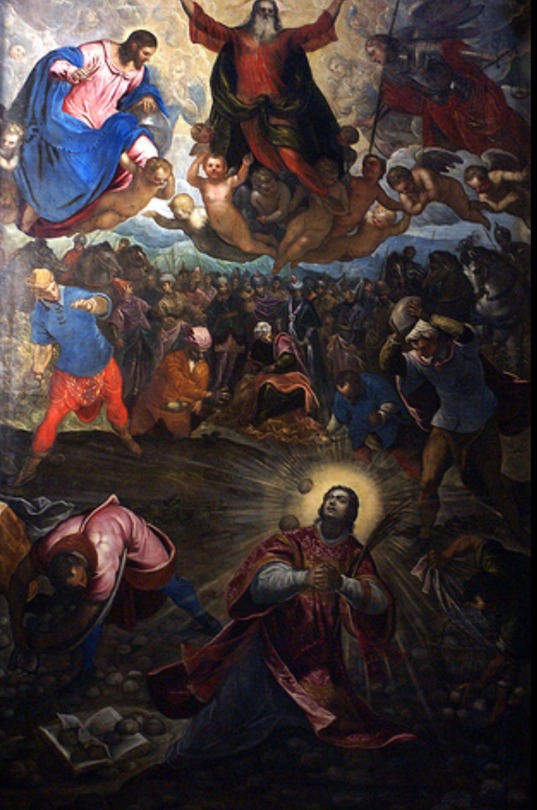
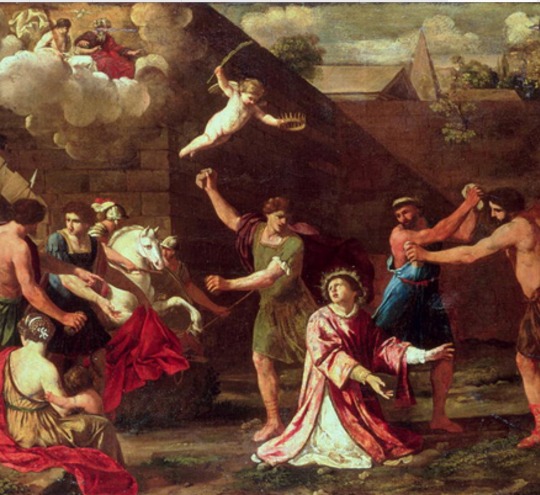
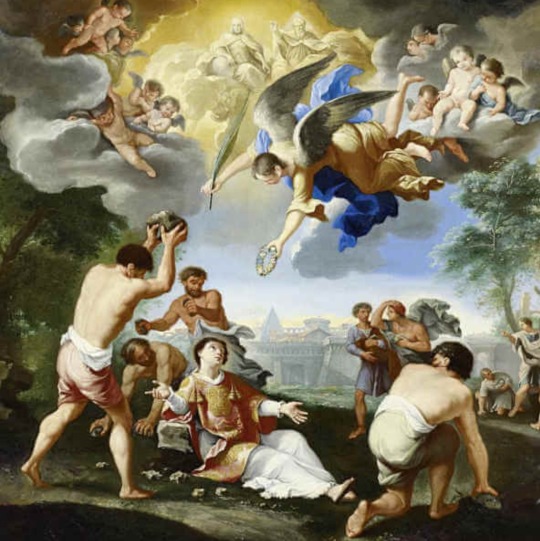
It‘s also once referenced in the story of St. Stephen the first Christian martyr.
Another instance where it is used is in the Book of Revelation.
45 notes
·
View notes
Text
So Nanashi edit for probably the final time I’ll play Apocalypse

Geez I just really hate the Dagda ending. Besides it and bonds there’s no other endings worth playing. To think people have the audacity to say SMT4 had the weakest endings?! This game has it beat by far. Something I noticed too is that it said the instant game over if you die is taken away after killing your friends so he definitely could have abused his immortality to beat Vishnu-Flynn like I thought since it’s the only way that makes sense for him to win. I was alternating between it and 4 and dang…despite my Nanashi being level 142 he still feels much less godly than my level 99 dex Flynn 😅. He needs much more set up do the levels of damage my dex Flynn does naturally. Maybe my dex build in 4 is just that busted? I dunno if I’ll do the dlc. Is it worth it? I was thinking of maybe doing the Diamond Realm dlc. I know this may sound like a hot take but no matter if he has busted immortality, the biggest edgelord fantasy ending, all his party members simping for him, or a free dlc to remove his level cap, or how much the cutscenes and art tries to make Nanashi look cool he’ll never be as cool as Flynn to me.
Bonus:
W/ based Chad Samurai Man from an earlier post

#shin megami tensei#smt4 apocalypse#smt iv apocalypse#nanashi smt#dagda#navarre smt#smt flynn#smt isabeau#my crappy edit
2 notes
·
View notes